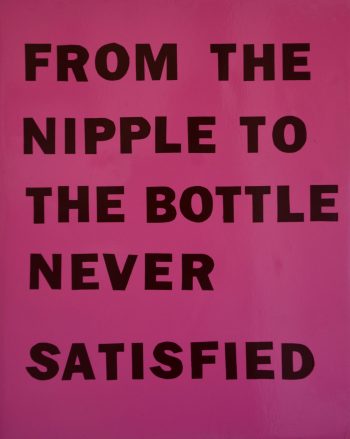Neal Tait
about
Born in 1965 in Edinburgh, Neal Tait lives and works in London. He graduated from Chelsea School of Art, 1987–91, gaining his master’s at the Royal College of Art, 1991–3, that year winning the Henderson & Parkinson Travel Award. In 2001, he participated in an artist residency at the British School at Rome.
Among his group shows were Spirit of London, South Bank Centre, 1988; Riverside Open, Riverside Studios, 1990; Whitworth Young Contemporaries, Manchester, 1993; Rising Scum, Fab-Co Warehouse, 1998; and Limit-less, Krinzinger Gallery, Vienna, Austria, 1999. His solo exhibition at White Cube, 2000, included Tait’s small, schematic portraits, mainly female faces in full view. Painted in expressionistic colours, they were Gothic yet contemporary in style, always with eyes averted, some like death masks, some in jackets hooded like a dark cowl. He had another show, The Burnished Ramp, with White Cube in 2003.
In 2006, Museum Dhondt-Dhaenens in Deurle, Belgium presented an important solo exhibition of Tait’s paintings entitled, Dark Mutter. His work has also been shown in numerous group exhibitions including Watercolour at Tate Britain in London (2011), A Terrible Beauty is Born, 11th Lyon Biennale in France (2011), Hoch Hinaus at Kunstmuseum Thun in Switzerland (2005), Direct Painting at Kunsthalle Mannheim in Germany (2004), and Painting on the Move at Kunsthalle Basel in Switzerland (2001), among others.
Diverse in palette and composition, Neal Tait’s paintings and drawings explore tensions between the figurative and the abstract, the beautiful and the grotesque, the logical and the absurd. Frequently based on found materials and media such as photographs, magazines and newspapers, his works provide glimpses into a dreamlike parallel universe, one that evokes the rhetorical logic of fairy tales or the absurdist humor of Surrealism. While traces of the figurative can be found in many of the artist’s works, Tait’s compositions do not follow an obvious storyline nor adhere to logical interpretation. Rather, like the memory of a dream, they exist on the outskirts of conscious understanding, occupying the space somewhere between physical reality and the subconscious.



